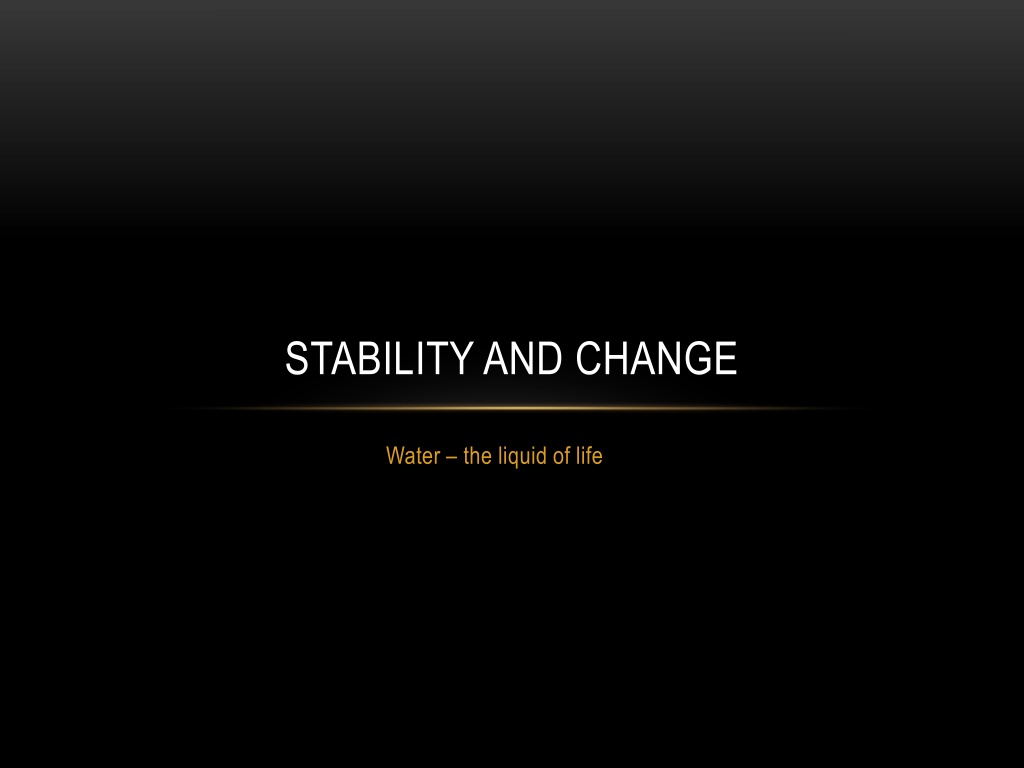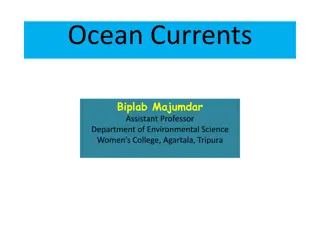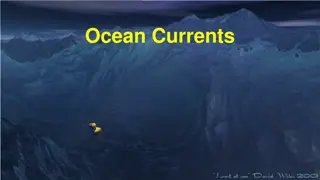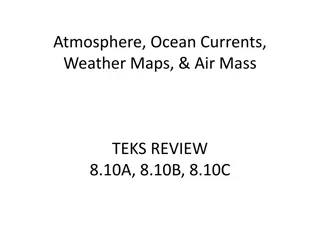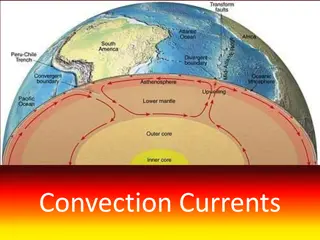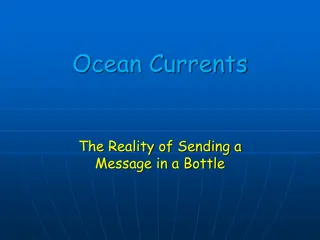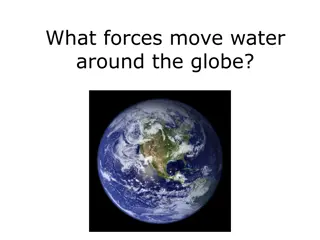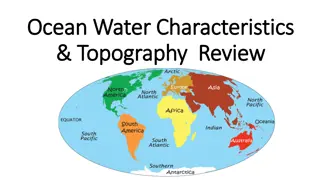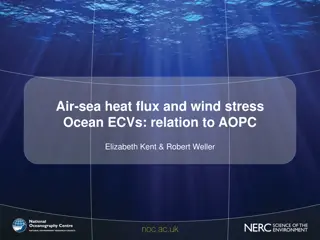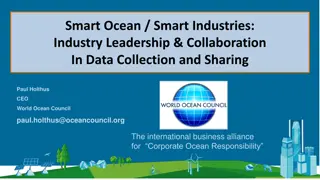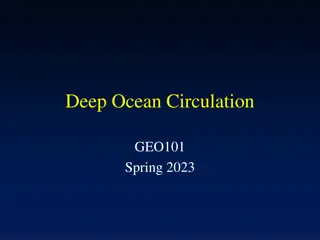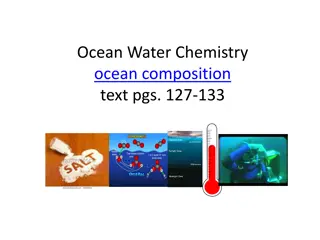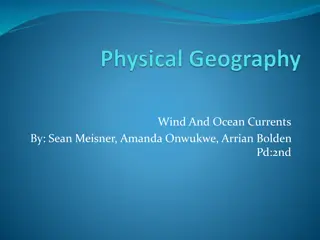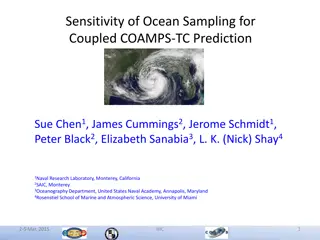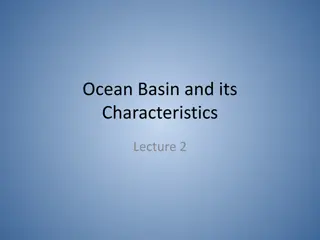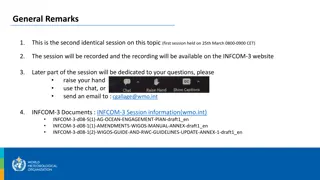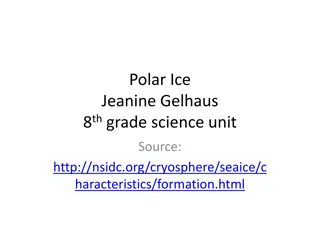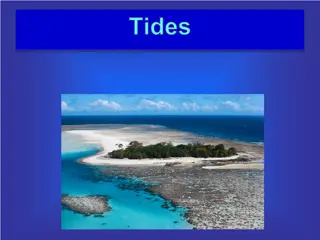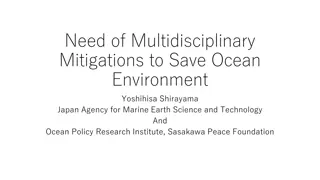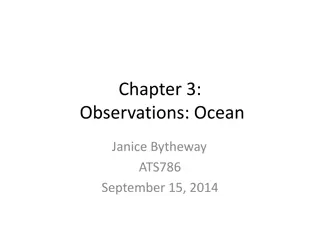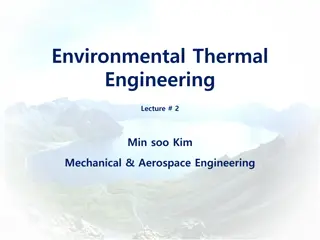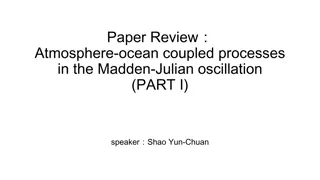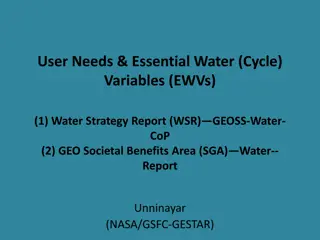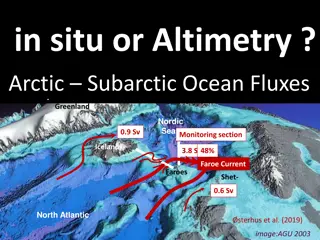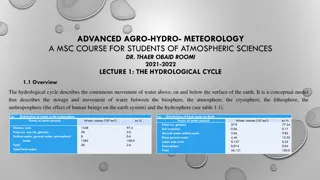Exploring the Vital Role of Water in the Water Cycle and Ocean Currents
Water, the essence of life, plays a crucial role in our ecosystem through the water cycle. From evaporation to condensation, and precipitation, water moves between states, sustaining life and influencing weather patterns. Additionally, ocean currents drive the movement of water worldwide, impacting climate and ecosystems. Understanding these processes is key to appreciating the delicate balance of nature.
Download Presentation

Please find below an Image/Link to download the presentation.
The content on the website is provided AS IS for your information and personal use only. It may not be sold, licensed, or shared on other websites without obtaining consent from the author. Download presentation by click this link. If you encounter any issues during the download, it is possible that the publisher has removed the file from their server.
E N D
Presentation Transcript
STABILITY AND CHANGE Water the liquid of life
Water is essential for life on Earth. It is therefore our most precious resource. There is certainly plenty of water on the planet almost 70 per cent of the Earth's surface is covered with water. But almost all of it is salt water in the oceans. The rest is in rivers, lakes, glaciers and ice in the polar regions.
THE WATER CYCLE Water is constantly moving and changing states. Heat from the sun makes water from the oceans evaporate slowly and form water vapour. The invisible water vapour rises with the warm air. When the water vapour becomes cold enough, it condenses to form clouds of tiny water droplets. The clouds are visible and are kept up by the air moving around them. If a cloud is close enough to the ground it is known as fog.
At high altitudes the air is very cold. When thick clouds reach this very cold area, the water droplets in them join together to form larger droplets, which are too heavy to be held up by moving air. The large droplets fall to the ground as rain. If the air is cold enough, the water is frozen and falls as snow or hail. Rainwater falls into the sea or runs over the ground into rivers and streams, eventually reaching the sea. This constant movement of water between the various states is called the water cycle.
OCEAN CURRENTS The sea water in the oceans of the world is constantly moving in currents. Ocean currents near the surface of the world's oceans move warm water and cooler water between the tropics and the north and south poles. The main causes of the currents are the warming of water near the equator and the sinking of colder water near the poles. Other factors, including wind and rate of evaporation, also affect the currents.
Ocean currents have a major influence on the water cycle and weather patterns. Changes in the ocean currents in the southern Pacific Ocean can cause periods of drought or unusually high rainfall in parts of Australia. Some ocean currents are permanent and form circular patterns called gyres. The diagram above shows the major ocean currents and gyres.
GLOBAL WARMING During daylight hours, heat from the sun enters the atmosphere and warms up the Earth's surface. At night, heat from the surface escapes through the atmosphere. Some of the gases in the atmosphere, including carbon dioxide, trap some of the heat. This trapping of heat is called the greenhouse effect. Without a natural greenhouse effect, the Earth would be too cold to sustain life as we know it. Together, plants and animals help to keep the gases in the atmosphere in balance. During the day, plants take in carbon dioxide to help them make their own food. In doing so, they produce and release oxygen. Animals do the reverse, breathing in oxygen and breathing out carbon dioxide. For a very long time the amount of carbon dioxide and oxygen in the atmosphere has been fairly constant.
However, over the past 200 years the amount of carbon dioxide and some other heat- trapping gases has increased. As a result, the Earth's temperature is beginning to rise. The rising temperature is known as global warming. Two of the main reasons for global warming are: the burning of fossil fuels. Each year the world's population adds almost 30 billion tonnes of carbon dioxide to the atmosphere by burning fossil fuels and the amount is growing year by year. the clearing of forests. Trees absorb carbon dioxide from the air and produce oxygen. As forests are cleared, this means of keeping the gases in the atmosphere in balance is removed. In Australia, two-thirds of all forests that existed 200 years ago have been cleared.
GLOBAL WARMING AND THE WATER CYCLE The increase in the Earth's temperature is likely to have an impact on the water cycle and therefore the world's climate. There is already evidence that in Antarctica, where 70 per cent of the world's fresh water is stored as ice, the coastal ice shelf and glaciers are melting. The permanent cover of ice in the Arctic Circle is shrinking by an estimated 9 per cent every 10 years. As the polar icecaps shrink, rising sea levels could cause flooding of some islands and coastal cities. Changes in climate due to global warming and changes in the water cycle may also cause: less rain and snow in high mountain regions more wild storms, including tropical cyclones more heat waves, droughts and bushfires.
Cyclone Tracy, which devastated Darwin on Christmas Eve in 1974, killed 65 people (16 at sea) and injured 650. Nearly 70 per cent of homes were destroyed. Some 35 000 people had to be evacuated. Global warming could cause an increase in the number of cyclones like Cyclone Tracy.
DEALING WITH DROUGHT In Australia, one of the major consequences of changes in the water cycle is an increase in the number and length of droughts. Until recently, people in major coastal cities have taken the supply of clean water suitable for drinking for granted. There was enough clean water available in dams to use for watering lawns and gardens, washing the car and filling swimming pools.
In recent years, droughts have been responsible for severe water restrictions in most major cities and many smaller regional towns. Building more dams is not always the best solution to increase water supplies. Dams and reservoirs on major rivers interfere with the flow of water downstream, causing problems for the environment and for farmers. Some states have built desalination plants to convert sea water to fresh water. In some towns and cities recycled water is used on some parks, gardens and sporting fields. Homeowners in the suburbs are installing water tanks.
It is up to every individual to recognize that good quality fresh water is a precious resource and should be used wisely at home, at school and in the workplace. Water should never be wasted, even in times of plentiful rainfall.
Myponga Dam near Adelaide, South Australia. Building more dams like this is not always the best solution to improve dwindling water supplies.
